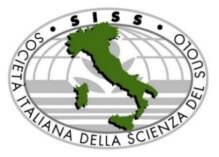Spatial analysis of subsurface water quality: A case study from an arid region of India
DOI:
https://doi.org/10.6092/issn.2281-4485/21354Keywords:
Subsurface Water, Spatial analysis, Arid region, Fluoride, NitrateAbstract
This study assesses the physicochemical and heavy metal contamination of subsurface water in Bikaner City, Rajasthan. Samples were collected from various tube wells and analyzed for pH, electrical conductivity (EC), total dissolved solids (TDS), major cations (Na⁺, K⁺, Ca²⁺, Mg²⁺), anions (HCO₃⁻, Cl⁻, SO₄²⁻, F⁻, NO₃⁻), and heavy metals (Mn, Cu, Zn, Pb, Cr, U, As). The spatial distribution of these parameters was visualized using Inverse Distance Weighting (IDW) in QGIS. The results revealed that several regions exhibit high TDS and nitrate levels. Fluoride concentrations in some areas surpassed the permissible limit (1.5 mg/L), raising concerns about potential health risks associated with dental and skeletal fluorosis. Heavy metals such as uranium and manganese were detected at varying concentrations, with localized hotspots exceeding permissible limits. The findings emphasize the importance of addressing both natural and anthropogenic sources of contamination to safeguard public health and promote sustainable water use in the arid region.
References
AGBASI J.C., ABU M., PANDE C.B., UWAJINGBA H.C., ABBA S.I., EGBUERI J.C. (2025) Groundwater salinization in coastal regions and the control mechanisms: Insights for sustainable groundwater development and management. In: Li P., He X., Wu J., Elumalaim V. (Eds) Sustainable groundwater and environment: Challenges and solutions. Springer, Cham, pp:165-191.https://doi.org/10.1007/978-3-031-82194-3_8
APHA (2017) Standard methods for the examination of water and waste water. 22nd Edition, American Public Health Association, American Water Works Association, Water Environment Federation.
BANERJEE P., PRASAD B. (2020) Determination of con-centration of total sodium and potassium in surface and ground water using a flame photometer. Applied Water Science, 10:113 https://doi.org/10.1007/s13201-020-01188-1
BHAKAR P., SINGH A.P. (2019) Groundwater quality assessment in a hyper-arid region of Rajasthan, India. Natural Resources Research, 28: 505–522. https://doi.org/10.1007/s11053-018-9405-4
BIS (2012) Indian standard for drinking water-specification (second revision). BIS-IS: 10500, New Delhi.
COYTE R.M., SINGH A., FURST K.E., MITCH W.A., VENGOSH A. (2019) Co-occurrence of geogenic and anthropogenic contaminants in groundwater from Raja-sthan. India. Science of the Total Environment 688:1216-1227. https://doi.org/10.1016/j.scitotenv.2019.06.334
DUGGAL V., RANI A., MEHRA R. (2014) Monitoring of metal contaminations in groundwater in Northern Raja-sthan. India. Journal of Environmental and Occupational Science 3: 114-118. https://doi.org/10.5455/jeos.20140223121124
GANDHI T.P., SAMPATH P.V., MALIYEKKAL S.M. (2022) A critical review of uranium contamination in groundwater: Treatment and sludge disposal. Science of The Total Environment 825: 153947. https://doi.org/10.1016/j.scitotenv.2022.153947.
JAIN A., SINGH S.K. (2014) Prevalence of fluoride in ground water in Rajasthan State: Extent, contamination levels and mitigation. Open Journal of Water Pollution and Treatment 1(2): 50-57. https://doi.org/10.15764/WPT.2014.02006
KARIMI M., TABIEE M., KARAMI S., KARIMI V., KARAMIDEHKORDI E. (2024) Climate change and wa-ter scarcity impacts on sustainability in semi-arid areas: Lessons from the South of Iran. Groundwater for Sustainable Development 24: 101075. https://doi.org/10.1016/j.gsd.2023.101075
KEESARI T., PANT D., ROY A., SINHA U.K., JARY-AL A., SINGH M., JAIN S.K. (2021) Fluoride geoche-mistry and exposure risk through groundwater sources in northeastern parts of Rajasthan, India. Archives of Environmental Contamination and Toxicology 80:294-307. https://doi.org/10.1007/s00244-020-00794-z
KINCAID D.W., FINDLAY S.E.G. (2009) Sources of elevated chloride in local streams: groundwater and soils as potential reservoirs. Water Air Soil Pollution, 203:335–342. https://doi.org/10.1007/s11270-009-0016-x
KRISHAN G., BISHT M., GHOSH N.C., PRASAD G. (2020) Groundwater salinity in northwestern region of India: A critical appraisal. In: Singh R., Shukla P., Singh P. (Eds), Environmental Processes and Management. Water Science and Technology Library 91, Springer, Cham, pp: 361-380. https://doi.org/10.1007/978-3-030-38152-3_19
KUMARI M., RAI S.C. (2020) Hydrogeochemical evalua-tion of groundwater quality for drinking and irrigation purposes using water quality index in semiarid region of India. Journal of the Geological Society of India, 95:159–168. https://doi.org/10.1007/s12594-020-1405-4
MEENA P.L. (2022) Study on the hydrogeochemical processes regulating the groundwater chemistry in the southeast Rajasthan. Journal of the Geological Society of India 98(10): 1455-1465.
NAG S.K., DAS S. (2017) Groundwater fluoride contami-nation: Evaluation of adverse health effects and suitability of groundwater for drinking in West Bengal, India. Environmental Earth Sciences 76: 40. https://doi.org/10.1007/s12665-016-6344-3
RAHMAN A., MONDAL N.C., TIWARI K.K. (2021) Anthropogenic nitrate in groundwater and its health risks in the view of background concentration in a semi arid area of Rajasthan, India. Scientific Reports, 11(1):9279. https://doi.org/10.1038/s41598-021-88600-1
RAHMAN A., TIWARI K.K., MONDAL N.C. (2020) Assessment of hydrochemical backgrounds and threshold values of groundwater in a part of desert area, Rajasthan, India. Environmental Pollution, 266: 115150. https://doi.org/10.1016/j.envpol.2020.115150
RAJMOHAN N., MASOUD M.H., NIYAZI B.A. (2021) Impact of evaporation on groundwater salinity in the arid coastal aquifer, Western Saudi Arabia. Catena, 196:104864. https://doi.org/10.1016/j.catena.2020.104864
SINGH A., MUKHERJEE S., CHANDRASEKHAR R. (2019) GIS-based evaluation of groundwater contamination in Punjab using contamination indices and human health risk assessment. Environmental Monitoring and Assess-ment 191(2):115. https://doi.org/10.1007/s10661-019-7205-3
TANWER N., DESWAL M., KHYALIA P., TANWAR V., MEHLA S.K., DALAL H. (2023) Assessment of groundwater potability and health risk due to fluoride and nitrate in groundwater of Churu District of Rajasthan, India. Environmental Geochemistry and Health 45(7): 4219-4241. https://doi.org/10.1007/s10653-022-01267-4
VIKAS C., KUSHWAHA R., AHMAD W., PRASAN-NAKUMAR, V., REGHUNATH, R. (2013) Genesis and geochemistry of high fluoride bearing groundwater from a semi-arid terrain of NW India. Environmental Earth Sciences, 68: 289-305.
WHO – World Health Organisation (2011) Guidelines for drinking water quality. 4th Edition. World Health Organization, Geneva. ISBN 978-92-4-154995-0
Downloads
Published
How to Cite
Issue
Section
License
Copyright (c) 2025 Leela Kaur, Prem Godara, Radha Kishan Saran

This work is licensed under a Creative Commons Attribution 4.0 International License.









